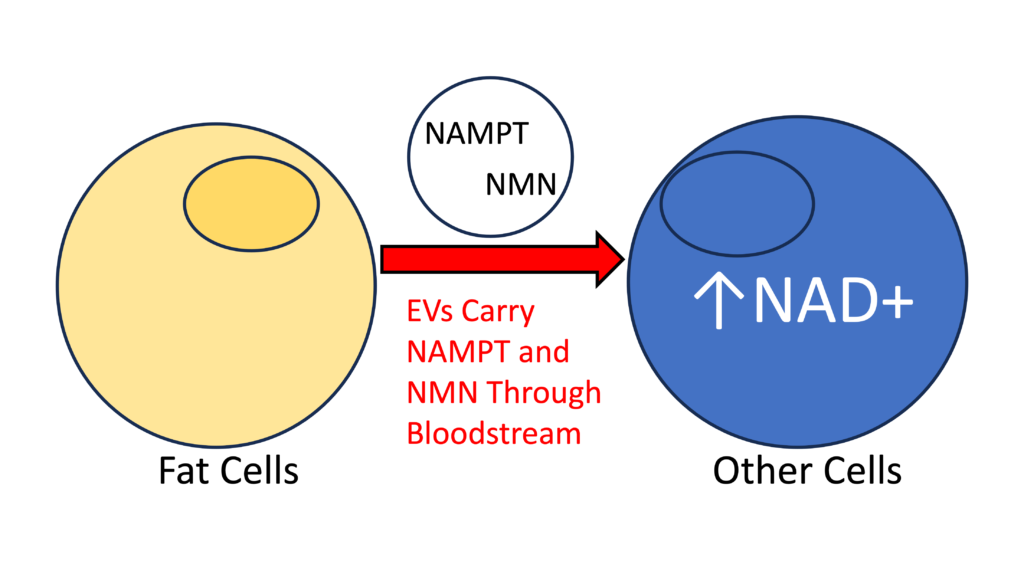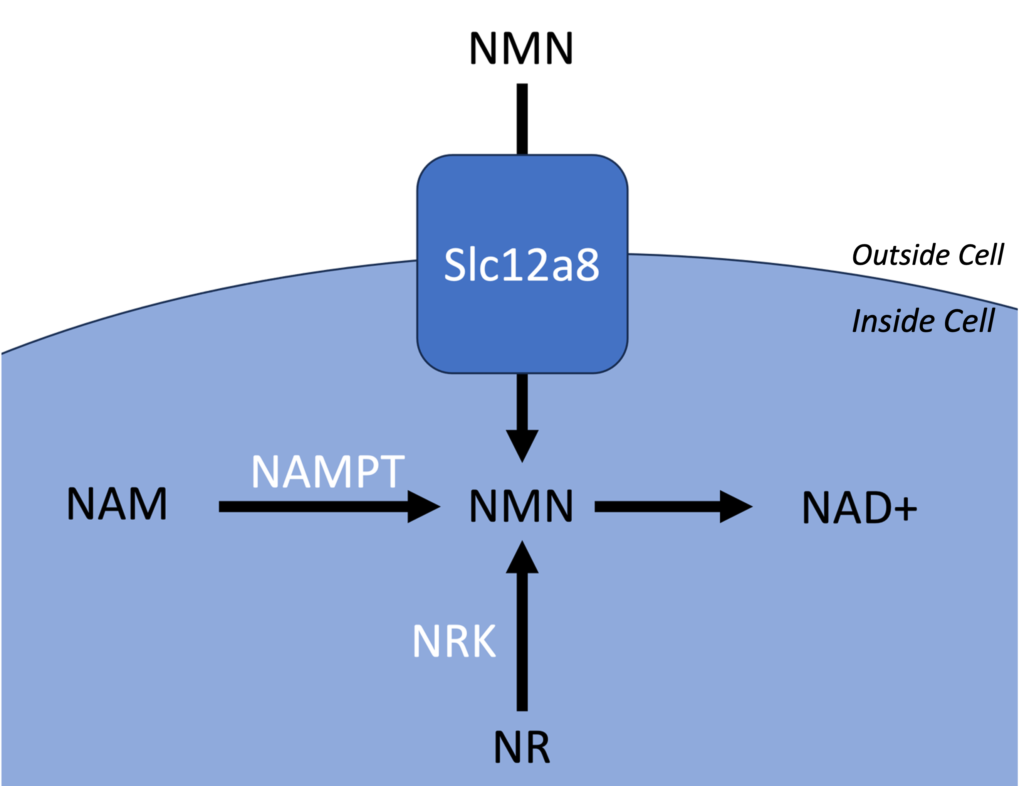The Science Behind NMN
Dr. Christopher Shade, founder and CEO of Quicksilver Scientific — a company that sells various products including a liquid NMN supplement — summarizes the science behind NMN.
Highlights:
- NMN is made via various enzymes and is spread throughout the body within membrane-bound sacs secreted by fat cells.
- Animal studies have shown that NMN counteracts age-related diseases, in models of Alzheimer’s disease, diabetes, and stroke.
- Human studies have shown the benefits of NMN, including improved metabolism and enhanced physical activity.
In an article published in Integrative Medicine: A Clinician’s Journal, Christopher Shade, PhD, the founder and CEO of Quicksilver Scientific succinctly summarizes the science behind NMN. He begins by saying the World Health Organization (WHO) has classified aging as a disease, which means that aging — encompassing age-related conditions like heart disease, cancer, and neurodegeneration — can potentially be treated with medicine.
Still, finding a medicine capable of treating aging requires an understanding of what causes aging. Along those lines, aging, at least in part, may be caused by decreased NAD+ levels. Biologist Shin-ichiro Imai, MD, PhD, describes aging as,
“A cascade of robustness breakdown triggered by a decrease in systemic NAD+ biosynthesis and the resultant functional defects in susceptible organs and tissues.”
Fortunately, we can replenish NAD+ levels with NAD+ precursors like NMN, which when taken orally is converted in the body to NAD+. Hence, with the promise of NMN as an anti-aging medicine, Shade reviews the science behind NMN, which is summarized here.
How Is NMN Made in the Body?
While small amounts of NMN can be found in foods like avocados, broccoli, cabbage, edamame, and cucumber, it is mainly made in our body from a form of vitamin B3 called nicotinamide (NAM). At the heart of NMN synthesis is an enzyme called NAMPT (nicotinamide phosphoribosyltransferase), which converts NAM into NMN.
Remarkably, NAD+, NMN and NAMPT levels all decline with age. Furthermore, our fat tissue may regulate NAD+ synthesis by secreting membrane-bound sacs filled with NAMPT (the enzyme used to make NMN) or NMN itself. These sacs circulate throughout the bloodstream and can unload NAMPT and NMN into cells, providing the cells with the tools and material necessary to make NAD+.

Role of Fat Cells in Maintaining Total Body NAD+ Levels. Fat cells secrete membrane-bound sacs called extracellular vesicles (EVs) containing NAMPT or NMN. EVs carry NAMPT and NMN to other cells where NAD+ is synthesized. Specifically, NAMPT converts NAM to NMN and NMN is directly converted to NAD+.
Shade points out that the membrane-bound sacs that carry NAMPT and NMN — referred to as extracellular vesicles — can be made synthetically. Synthetically made vesicles called liposomes are often used as drug delivery systems. Therefore, liposomes carrying NMN could mimic a natural transport mechanism for NMN in the body and be used as a potential anti-aging medicine. Notably, one of Quicksilver Scientific’s products are liposome delivery systems.
Another way NAD+ is made within cells is from an NAD+ precursor called nicotinamide riboside (NR), which is converted to NMN by an enzyme called NRK (nicotinamide riboside kinase). NMN can also move into cells directly, through a recently discovered transporter named Slc12a8. The Slc12a8 transporter is found in many cells throughout the body, but most abundantly within the intestinal lining, suggesting that our gut bacteria produce NMN.

NAD+ Synthesis Within Cells. NMN is transported into cells through the Slc12a8 NMN transporter and directly converted to NAD+. The main source of NMN within cells is nicotinamide (NAM) which is converted to NMN by the NAMPT enzyme. Nicotinamide riboside (NR) is also converted to NMN by the NRK enzyme.
The Anti-Aging and Health Benefits of NMN
Mouse studies have demonstrated that NMN is beneficial in treating several age-related conditions, including Alzheimer’s disease, where NMN slows cognitive decline by promoting the survival of neurons. In diabetic and obese mice, NMN improves insulin secretion, which lowers blood sugar levels. Related to this, NMN enhances insulin sensitivity, meaning less insulin is required to signal the body to lower blood sugar levels.
Additionally, NMN reduces age-associated weight gain, improves eye function, and enhances physical activity. At the cellular level, NMN boosts energy metabolism, combats oxidative stress, reduces inflammation, and promotes mitochondrial health. NMN also restores the muscles of aged mice and maintains the integrity of the blood-brain barrier. Furthermore, NMN has proved beneficial in mouse models of heart attack and stroke.
Moreover, NMN is safe and well tolerated in mice after over one year of supplementation. Many studies administer NMN to mice by dissolving it in their drinking water. Indeed, NMN is stable in water at room temperature for 7 to 10 days. When administered orally to mice, NMN is rapidly absorbed, increasing blood NMN levels within less than three minutes.
NMN for Human Health
Dr. Shin-ichiro Imai has said that NMN supplementation may render someone ten or twenty years younger, but is he right? Toward the end of the article, Shade mentions that Imai and his team are studying NMN in humans. Since then, Imai and his team have published a study showing that NMN improves insulin sensitivity in prediabetic older women. This historic NMN human trial was the first to show the health benefits of NMN in humans.
Shade continues by saying Harvard professor David Sinclair is also conducting human trials. Sinclair and his colleagues have since published a study showing that NMN reduces weight, cholesterol, and blood pressure in overweight adults. Moreover, additional human studies have shown that NMN is safe, enhances physical performance, and improves hearing in older adults. Therefore, as more human studies are published, we may find that Dr. Imai is right.

